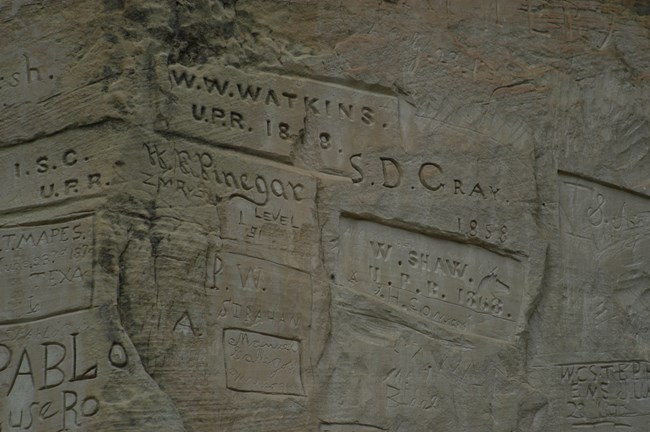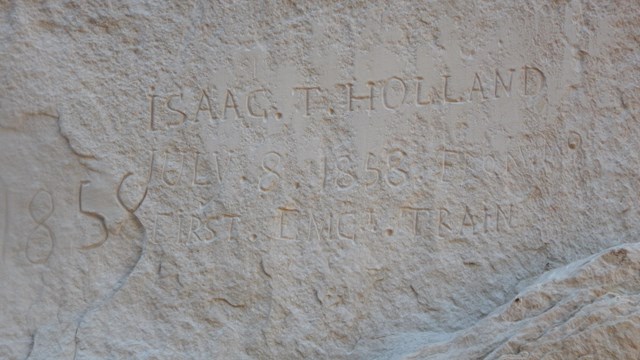
NPS Photo Westward ExpansionNew Mexico became a US territory as a result of the US-Mexican War (1846-48). The US Army completed extensive surveys of the new territory. In 1849, Lt. James H. Simpson and artist Richard Kern of the US Army Topographical Engineers made the first English descriptions of El Morro and left their own marks behind. A Road Through the DesertAn Army expedition led by Lt. Edward F. Beale passed by El Morro in 1857 as they worked to survey a wagon road from Fort Smith, Arkansas to California. The expedition was also instructed to experiment with the use of camels for desert transportation. The Beale’s wagon road continued to be used by the army and settlers headed west, many of whom inscribed their name on “Inscription Rock.” In 1868, a Union Pacific survey party looked for a rail route past El Morro. Ultimately the 35th parallel route, recommended earlier by the Engineers, took the trains 25 miles to the north. After this, most traffic through the El Morro valley ceased. The area continued to be used for trade between Zuni and Acoma pueblos and for the Mormon settlers of Ramah. In December of 1906, the rock and its inscriptions was declared a National Monument by Theodore Roosevelt, making it the second in the nation. 
The Camel Corps
The U.S. Army Camel Corps experiment. Learn about the rise of the Camel Corps, the paths they took, and the outcome of the experiment. 
The First Emigrants
Bravery, strength, and desperation inspired Americans to head West. 
The Early Years
The foundation of El Morro National Monument, and the people that made it what it is. |
Last updated: November 13, 2023
